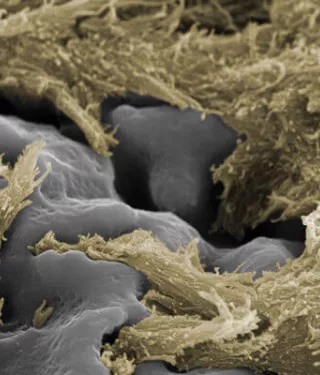
Putting TiUnite to the test
Prof. Albrektsson is the co-author of a landmark meta-analysis analyzing all prospective studies published on the TiUnite dental implant surface. Read more.
Having been involved with dental implantology from the very beginning, Professor Tomas Albrektsson was a keen observer when Nobel Biocare launched its moderately rough TiUnite surface in 2000. Now, 17 years on, he is the co-author of a landmark meta-analysis analyzing all prospective studies since published on the surface – 106 papers in total, featuring over 12,000 TiUnite implants.1 Here, he explains the significance of the findings.
Professor Albrektsson, the meta-analysis assessing TiUnite implants that you co-authored with Professor Matthias Karl is perhaps the most extensive assessment of a single brand of dental implants. What is the relevance of looking at research on the TiUnite surface in such detail?
Professor Albrektsson: “It is always relevant to have proper clinical studies conducted. But it is the sheer wealth of evidence on TiUnite implants that made this meta-analysis possible. Nobel Biocare is definitely leading the way here. There are some other systematic reviews on a single implant surface or brand, but not many. And the more we know, of course, the better it is for dental professionals and for patients.
“Research of this nature highlights the stark contrast between high-quality implants and the copycat versions that are likely not backed by documentation. Even if they seemingly look like the implant that they’re trying to imitate, this does not mean they will work in the same way. So this is really the most important thing – that a dental implant really works as planned and that there is high-quality evidence to prove it.”
What were the key findings of this TiUnite meta-analysis and why are they important?
Albrektsson: “It was reported, not to any great surprise, that there is a very high implant survival rate for implants with the TiUnite surface. We know today that TiUnite has a very good clinical record with maintained bone levels in the great majority of cases. There are actually five different ten-year studies on TiUnite that demonstrate well-maintained bone levels.”
What does your study tell us about rates of peri-implantitis with TiUnite implants?
Albrektsson: “The publications assessing biological complications revealed a low prevalence of peri-implantitis with TiUnite implants. This is also no big surprise. The figures we’ve seen widely reported in the literature are exaggerated. They say that any bone loss after the first year is disease which is, to put it mildly, incorrect.
“We see maintained bone levels in this study and in other ten-year follow-up studies with TiUnite. If peri-implantitis is a disease, which is something widely discussed at this time, it may affect one percent of implants at ten years. So, if by ‘disease’ we mean bone loss that threatens the survival of the implant, it’s in the order of one percent.
“Nobel Biocare’s implant systems are not the only ones showing good results with respect to peri-implantitis but if I were to choose an implant today I would look at the documented research, which is so much better with Nobel Biocare. The TiUnite implant surface is backed by more five- and ten-year studies than implant surfaces from the majority of competitors. When it comes to supporting evidence, Nobel Biocare implants have the advantage.”
How can the findings of this meta-analysis be used to optimize clinical practice?
Albrektsson: “I think that we have to strive for continuous improvement. In the 1800s if you had 19% mortality with appendicitis cases you were better than the average doctor. Today such a mortality rate would see you lose your license because we have new techniques. It’s a similar story with dental implants – we have to constantly challenge what we think of now as the ultimate implant solution in order to have even better solutions for patients in future.
“It is a continuing mission and I know that Nobel Biocare is involved in a number of studies with a view to making further improvements. I think this is exactly the right approach because the ideal situation is that we have 100% survival and success rate at ten years. We aren’t there yet, but that’s the goal.”
You have been involved with research evaluating Nobel Biocare implants for many years. Have the findings of your analysis changed your perception of the TiUnite surface in any way?
Albrektsson: “The meta-analysis is another validation of TiUnite’s efficacy, but there is confirmation of its high performance also in other types of clinical studies. Meta-analysis offers high-quality insight, but you need a wide range of supporting evidence, and TiUnite is backed not just by prospective studies, as we examined, but by retrospective research and other study types as well. The statements we make about TiUnite implants today can therefore be made with great confidence.
“I observed TiUnite being launched in the year 2000. I believed in it then and now I know that my beliefs were correct. It is a superb implant surface.”
References
1. Karl, M. and Albrektsson, T. Clinical performance of dental implants with a moderately rough (TiUnite) surface: A meta-analysis of prospective clinical studies, Int J Oral Maxillofac Implants (accepted).